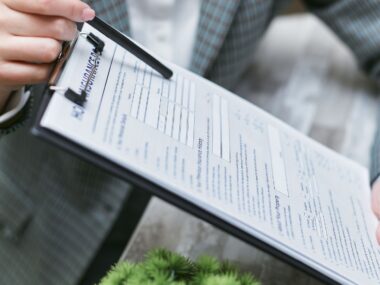Dealing with the aftermath of a car accident can be a daunting experience, especially when you find yourself facing the insurance company of the at-fault driver.
Insurance claims can be complex, and it’s essential to navigate this process effectively to ensure you receive fair compensation for your damages.
In this comprehensive guide, we’ll walk you through how to deal with an at-fault driver’s insurance company, providing you with insights and tips to make the process smoother and more successful.
How To Deal With An At-Fault Driver’s Insurance Company
Before delving into the intricacies of dealing with the at-fault driver’s insurance company, it’s crucial to have a solid grasp of some fundamental concepts:
1. What is an At-Fault Driver?
An “at-fault” driver is the party responsible for causing a car accident due to their negligent actions or violations of traffic laws. When you are not at fault in an accident, you have the right to seek compensation from the at-fault driver’s insurance company to cover your losses.
2. The Role of Insurance Companies
Insurance companies play a pivotal role in the compensation process after a car accident. They are responsible for investigating claims, determining liability, and ultimately providing financial coverage to the affected parties, as per the terms of the insurance policy.
Initiating the Claim Process
Dealing with an at-fault driver’s insurance company begins with the proper initiation of the claim. Here’s how you can get started:
3. Gather Essential Information
Collect all pertinent information about the accident, including the at-fault driver’s insurance policy details, contact information, and any police reports or witness statements. This information will be crucial when filing your claim.
4. Notify Your Insurance Company
While you will primarily be dealing with the at-fault driver’s insurance company, it’s essential to notify your insurance company about the accident promptly. This is often a requirement outlined in your own insurance policy.
5. Contact the At-Fault Driver’s Insurance Company
Reach out to the at-fault driver’s insurance company as soon as possible. Provide them with the necessary details about the accident and your intent to file a claim. Be sure to obtain a claim number for reference.
The Claim Process
Once you’ve initiated the claim, the insurance company will take over. Here’s what you can expect during this phase:
6. Investigation
The insurance company will conduct a thorough investigation to determine liability. This may involve reviewing accident reports, talking to witnesses, and assessing the extent of damages. Be prepared to cooperate fully during this process.
7. Damage Assessment
The insurance adjuster will assess the damages to your vehicle and your injuries, if any. They may request medical records and repair estimates. It’s crucial to provide accurate and detailed information to support your claim.
8. Negotiation
Insurance companies may initially offer a settlement amount, but it’s often lower than what you deserve. Don’t rush to accept the first offer. Negotiate with the adjuster and present evidence to justify a higher settlement if necessary.
Finalizing Your Claim
As you work towards finalizing your claim, keep these considerations in mind:
9. Settlement Agreement
Once you and the at-fault driver’s insurance company reach a mutually agreeable settlement, ensure that the terms are clearly outlined in writing. This agreement should specify the compensation amount and any conditions.
10. Release of Liability
In exchange for the settlement amount, you will likely be required to sign a release of liability, absolving the at-fault driver and their insurance company from any further claims related to the accident.
11. Disbursement of Funds
After signing the release of liability, you can expect to receive your settlement funds. Ensure that the disbursement is prompt and accurate, covering all your accident-related expenses.
Frequently Asked Questions (FAQs)
Q1: Can I file a claim with my insurance company even if the accident was not my fault?
A1: Yes, you can file a claim with your insurance company, even if you are not at fault. This is often a necessary step to ensure your damages are covered promptly. Your insurance company may then seek reimbursement from the at-fault driver’s insurance.
Q2: What if the at-fault driver’s insurance company denies my claim?
A2: If your claim is denied by the at-fault driver’s insurance company, you can appeal the decision or consider legal action. Consult with an attorney experienced in personal injury and insurance claims to explore your options.
Q3: How long does the claims process typically take?
A3: The duration of the claims process can vary significantly depending on the complexity of the case and the insurance company’s efficiency. It may take several weeks to several months to reach a resolution.
Conclusion
Dealing with an at-fault driver’s insurance company can be a complex and sometimes frustrating process.
However, by understanding the basics, initiating the claim process correctly, and staying informed throughout, you can increase your chances of receiving fair compensation for your losses.
Remember that seeking legal advice may be necessary if you encounter difficulties during this process.
Your patience and diligence can make a significant difference in the outcome of your claim, ensuring that you are not left to bear the financial burden of someone else’s negligence.






